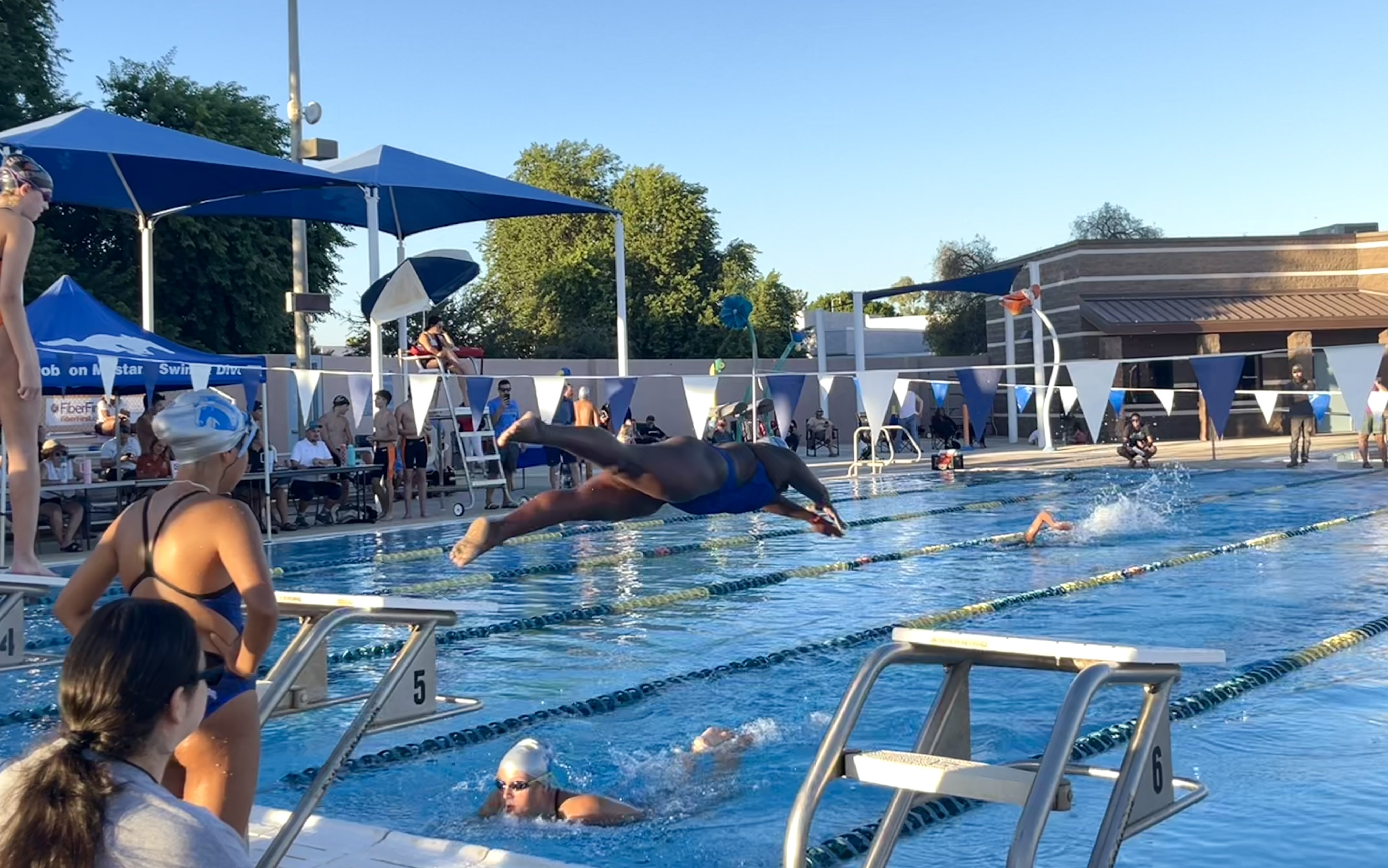Dobson eager to help change lack of diversity in swimming
November 13, 2024 by Emma Wakefield, Arizona State University

Emma Wakefield is an ASU Cronkite School of Journalism student assigned to cover Dobson High School for AZPreps365.com
Dobson had multiple wins under their belt this season. But the Mustangs as well as other boys and girls swimming teams across the state still have room for improvement in one glaring area.
Swimming lacks diversity compared to other sports. Diversity is apparent in other sports such as football, track and field, and basketball throughout the years, but why not swimming?
“People of color are told we’re not meant to swim, and that we’re meant to do track, basketball, football or what some people would call a ‘Black sport’,” Dobson sophomore Hawa Savoy said. “I think that’s why many of them don’t think about getting into the pool.”
Stereotypes like these stem from a long history of Black marginalization in the U.S. when segregation laws were put in place to separate white from Black people. These laws prohibited people of color from swimming in most pools. Although segregation laws were decades ago before the Civil Rights Act in 1964, they still affect society today.
Former Dobson swimmer Matthew Girle was introduced to swimming at a young age. From there, he grew to enjoy the sport. As a young Asian male in the swimming community, he believes that more minority groups would try swimming if they had easier access to the facilities without being priced out.
“Children from wealthier backgrounds usually have access to more specialized sports like golf, tennis, or swimming that take specific equipment and facilities that are not available to everyone,” Girle said. “Because of this, those from economically disadvantaged backgrounds might lean towards more accessible sports like football.”
Socioeconomic background plays a huge role in the sports people play later in life. Accessibility to certain sports facilities like pools can be hard to come by in low-income neighborhoods. That factors in why swimming tends to be less diverse compared to other sports.
“I believe that swimming is something that anyone can do their entire life," Hawa’s father Will Savoy said. "Making it more accessible could add value to the sport long term."
Although Will doesn’t consider himself a swim expert, he believes that it’s an important life skill to have in general. Will enjoys watching his daughter grow and succeed in swimming, and he thinks others could benefit from the sport in a similar way.
Diversity has the potential to bring the sport of swimming to the next level. Introducing it to more people of color would bring new and unique talent, and give a better representation to the sport as a whole.
“One of the best things diversity could do is inspire more young people from underrepresented communities to participate in the sport, and that would in-turn allow swimming to gain greater popularity and reach,” Girle said.
